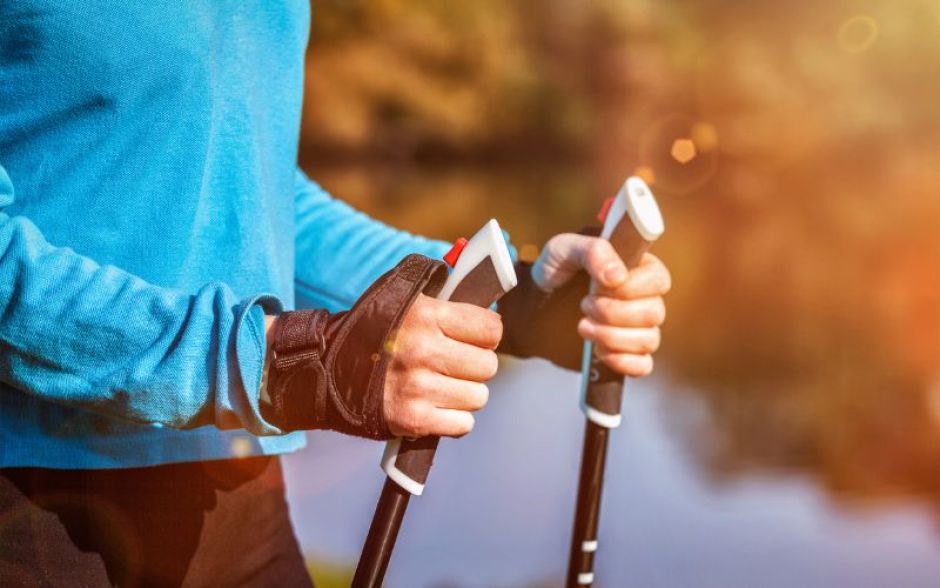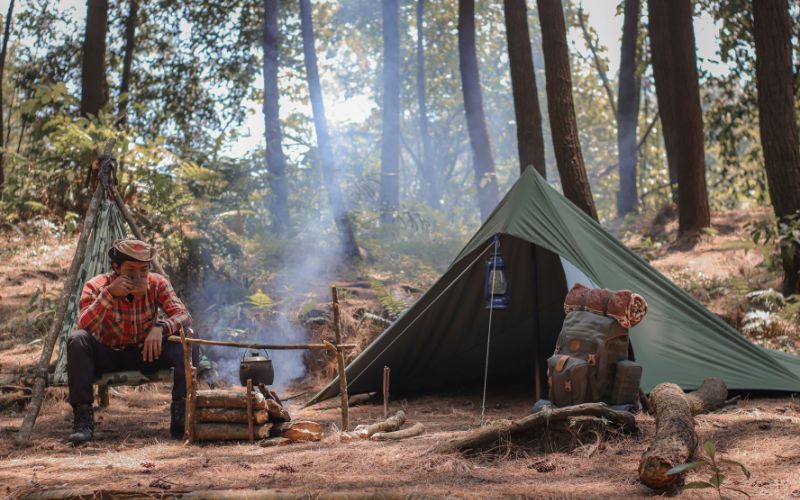
Trekking Poles : An Essential Super Guide to the Trekker’s Companion 2023
Trekking poles, once a peripheral tool largely bypassed by novice outdoor enthusiasts, have undergone a significant evolution in the trekking community’s collective consciousness. Over the years, as the nuances of trekking became better understood and the gear became more specialized, these poles have transformed from mere accessories to indispensable companions on trails. Now, both seasoned mountaineers scaling the highest peaks and casual weekend hikers exploring local trails swear by them. What’s behind this shift in perspective?

Not only do these poles offer unrivaled stability on challenging terrains, ensuring every step is more secure, but they also play a pivotal role in alleviating the stress exerted on one’s joints during both ascents and descents. Venturing beyond their physical attributes, trekking poles can also influence a hiker’s rhythm and pace, providing a more harmonious connection with nature. As we journey through this article, we’ll unravel the multifaceted world of trekking poles, spotlighting their paramount importance and furnishing invaluable tips for their selection and optimum usage.
Table of Contents
Why are Trekking Poles Essential?
- Reduced Impact on Joints: Trekking poles have been shown to reduce the impact on your legs, knees, ankles, and feet, especially during descents.
- Enhanced Stability: They provide additional points of contact, which can be particularly useful on slippery or uneven terrains.
- Aid in Balance: Poles can be instrumental in helping hikers maintain their balance, especially when crossing streams or navigating loose rocks.
- Increased Pace: For many, the rhythm of using trekking poles can increase walking pace and can assist in maintaining a consistent speed.

Key Features of Trekking Poles
- Material: Most poles are made of aluminum or carbon fiber. Aluminum is durable and tends to be cheaper, while carbon fiber is lighter but can be more brittle.
- Adjustability: Many poles offer adjustable lengths to suit the user’s height and the terrain’s demands.
- Grip: The grip can be made from various materials, including foam, cork, and rubber. Each has its benefits, with cork being comfortable and moisture-wicking, foam being light and absorbent, and rubber insulating against cold.
- Locking Mechanism: This ensures that the poles stay at the desired length. Popular types include twist locks and lever locks.
- Shock Absorbers: Some poles come equipped with an anti-shock mechanism that can lessen the impact on your hands and wrists.
- Tip: Made of durable materials, the tip is designed to grip the ground and provide stability. Some trekking poles come with interchangeable tips for different terrains.

How to Choose the Right Trekking Poles
- Determine the Use: If you’re into mountaineering, you might want a robust and durable pole. Light treks might require something lightweight and easily adjustable.
- Consider Your Height: As a general rule, when holding the pole with your arm at your side, your elbow should be at a 90-degree angle.
- Think About Portability: If you’re a backpacker or traveler, foldable or collapsible poles can be highly beneficial.
- Budget: Like all trekking essentials, poles come in a range of prices. Determine your budget but remember that investing in a good pair can make a significant difference in your trekking experience.

Using Trekking Poles Efficiently
- Correct Length: Adjust the length to suit the terrain. Shorter poles are efficient for uphill treks, while longer poles can help during descents.
- Proper Grip: Hold the grip, not the shaft, and let your wrists hang comfortably from the straps. This provides better control and reduces the chance of injury.
- Walking Technique: Instead of simultaneously moving a leg and its corresponding arm, use the opposite pole and leg together. This maintains balance and distributes weight effectively.
- Navigating Terrains: On steep terrains, plant the pole firmly before taking a step. When crossing streams or slippery areas, ensure that the pole’s tip is firmly anchored before shifting your weight.

Maintaining Your Trekking Poles
- Regular Inspection: Check for any damages, especially in the locking mechanism, to ensure they don’t give out during a trek.
- Cleaning: After every hike, especially if you’ve been in muddy or sandy areas, clean the poles to increase their longevity.
- Storage: Store them in a cool, dry place and avoid placing heavy objects on them to ensure they maintain their straightness.
In conclusion, trekking poles, a vital sub-category of trekking essentials, have transformed the way we hike, trek, and explore the great outdoors. They provide a blend of stability, pace enhancement, and joint protection. Whether you’re a casual hiker or a seasoned trekker, incorporating trekking poles into your adventures can significantly elevate your outdoor experiences.
You might also like:
Sharing would be nice:
Other Trekking Essentials:
Newsletter
About me
Meet Dennis, an enthusiast of the great outdoors. For the past 15 years, he’s maintained a daily routine that includes running, hiking, and hitting the gym, embodying a commitment to an active and healthy lifestyle.
Dennis is a true advocate for the joy and rejuvenation that outdoor living can bring.



